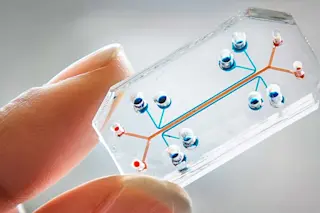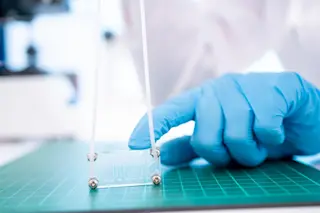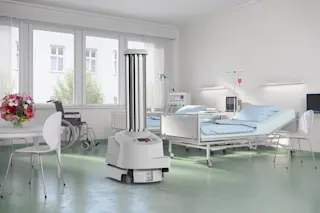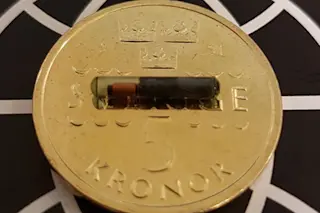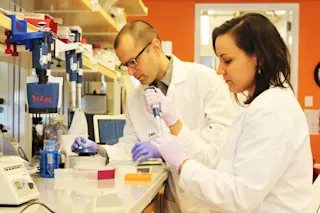Scientists have long experimented with organs-on-chips: tiny representations of human organs, such as lungs, hearts and intestines, made from cells embedded on plastic about the size of a computer memory stick. Channels lined by living vascular cells then mimic the body’s circulatory system. But our bodies are complex systems of organs, so testing drugs on individual miniature organs only goes so far. Researchers now are aiming for something more: full-blown human bodies-on-chips.
The kick-start came from the U.S. Department of Defense, which wanted a quick and effective way to develop and test drugs and vaccines against biological and chemical weapons. So federal agencies funded various projects to develop chips representing all the major organ systems. Each organ-on-a-chip hosts real human tissue kept alive by a synthetic circulatory system. Join enough of them together, and you’ve got a high-tech stand-in for the human body.
Researchers at Harvard’s Wyss Institute have 12 ...


